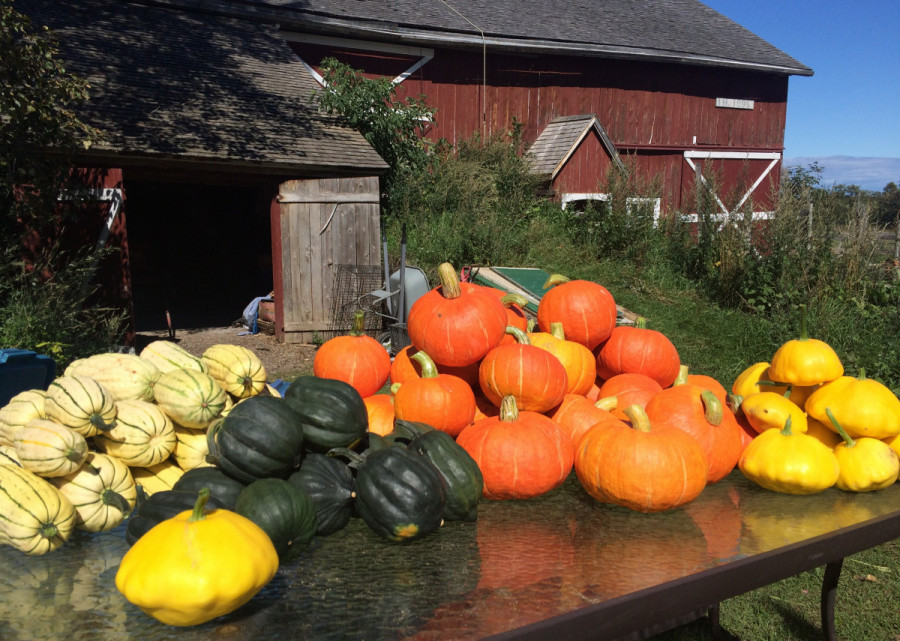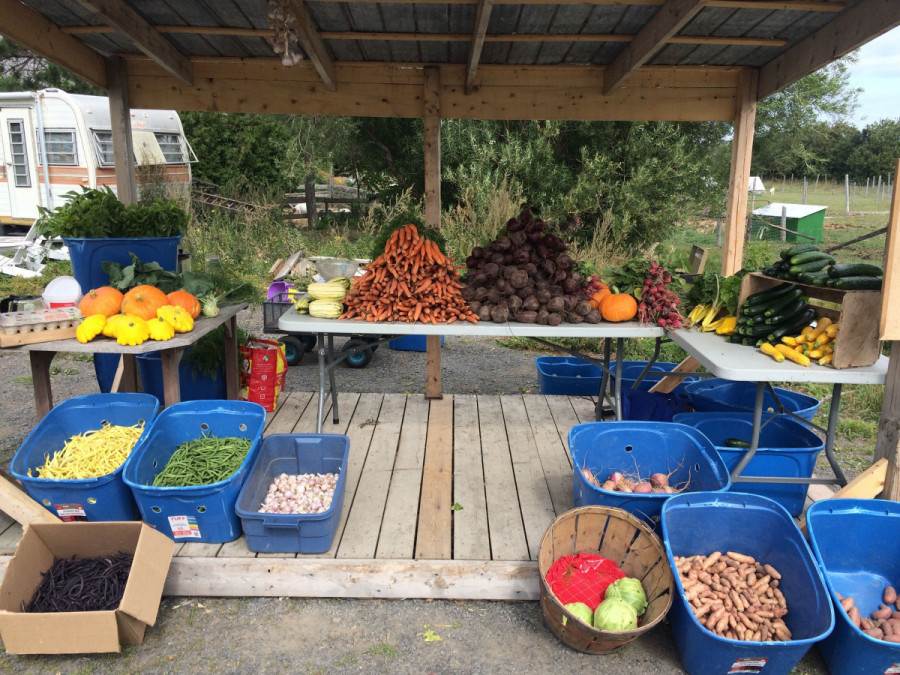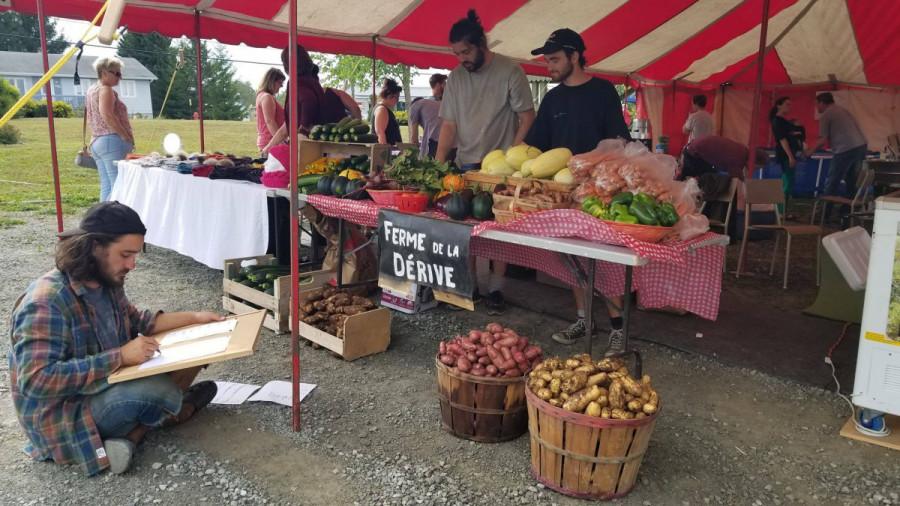Resilience: Putting food on the table despite climate change
The agriculture industry on adapting to the unpredictable
In July, Gabriel Leblanc, who grows vegetables on a small farm in Rimouski, did not know if his crops were going to make it through the summer. ‘’Seeing the plants die one by one, you don’t really know what to do,” he said.
At that time, Québec was going through a drought so severe that it called for a crisis unit to be formed. It was the third drought to strike the province in the last four years, and it was the most widespread.
Although individual extreme weather events such as this summer’s drought are difficult to directly attribute to climate change, climate change brings these events at a higher frequency. Canada’s Climate Change Report 2019 states that ''until climate is stabilized, there will not be a new ‘normal’ climate.''
That such events have wreaked havoc on Quebec’s agriculture industry in recent years raises concern: What is the industry doing to address the rising instability of climate and the potential food security issues that could ensue?
From research labs to producers’ initiatives to small farmers’ strategies, those in the agricultural industry need to find ways to keep feeding the world while facing growing climate instability. They need to keep standing when the world crashes down. They need resilience.
The Geomatic Agroclimate and Observations of the Earth is a federal research division concerned with providing leadership in the development of a competitive, innovative, and sustainable Canadian agriculture industry and food supply chain. Alain Houde, director of research, leads this team and several others that dive into the question of food security in the current and future climate contexts.
One of them, based in Ottawa, studies the resilience of agroecosystems. Some of Houde’s teams also take a look at the possibility of using vertical and greenhouse farming to secure affordable, healthy, and diverse foods for vulnerable and remote communities, namely Indigenous communities, as ''food security is essential for health and well-being.''
As the climate warms, it may become possible to cultivate a greater array of foods in northern parts of Quebec, although Houde warns it may not be economically viable to maintain a greenhouse’s ideal climate when outside temperatures drop below -40 or -50 degrees Celsius, even with a warming north.
Specialists working with Houde also study changes in precipitation, especially droughts and floods, to build models that have the best possible ability to predict the impact of future climate on agriculture. Their work has yielded the Canadian Drought Monitor, which publishes maps of drought-prone areas, updated monthly.

No matter how good researchers get at making predictive models, ''climate change still produces highly unpredictable situations,'' admits Houde.
Beyond labs, some are working in the field on solutions for what is coming. Agriclimat, an initiative launched by Québecois farmers, aims to have a better understanding of how climate change impacts agriculture and what can be done to prepare for it.
Resilience of farms is an integral part of their vision, ''by building [farmers’] capacity to take climate change projections into account in major business decisions, while contributing to sustainable agricultural development.'' This project bets on educating participants on farming practices better adapted to future realities through the advice of twenty-some specially trained professionals.
“Seeing the plants die one by one, you don’t really know what to do.” – Gabriel Leblanc
On Leblanc’s small farm, a non-profit organization called La Dérive, resilience means diversity, healthy soils, and mutual support within a community.
In terms of diversity, Leblanc explains that planting a wide range of crops that react differently to varying weather patterns increases the likelihood of having food to put on the table. For example, if drought strikes, a certain type of crop may die, but another one with greater resistance to dry weather could still have a successful harvest.
Diversity in crops helps ensure that some succeed. It also contributes to keeping soils healthy, stresses Leblanc, as healthy soils are key to healthy crops.
He cited diminishing pesticide usage and the application to soil of clay humus complexes, which act as water and chemical reservoirs and improve adaptability to changes in precipitation, as complementary strategies for keeping soils healthy and resilient.
Although sustainability is central to La Dérive’s farming practices, its ultimate mission is a “social one” to allow economic and physical access to local and ecological foods for people in economically difficult situations. They mainly provide for vulnerable communities, while also selling their products to the public at large.

Meanwhile, the Canadian government is working on a food policy that aims for every Canadian to be ''able to access a sufficient amount of safe, nutritious, and culturally diverse food.'' As part of the program, several funds are put in place.
The Local Food Infrastructure Fund supports community-based, not-for-profit organizations in improving the infrastructure used to address food insecurities, while the Surplus Food Rescue Program helps redirect surpluses to avoid wasting these products.
Helping farmers keep up their practice, the Financière agricole du Québec offers a variety of risk management programs to compensate them during difficult years, while putting together regular reaping and compensation request reports. The Fund for the Protection of the Environment and the Waters in the Domain of the State, on the other hand, helps resilient farming at the source by supporting sustainability-focused projects.
As such, many initiatives in the form of research, educational material, and financial support exist to address the alarming risks of climate change on food security at both the provincial and the national level. In a climate of uncertainty, the only constant is the search for resilience.
As Leblanc puts it, ''it is a learning process,'' where improvements are observed year after year.
This article originally appeared in The Food Issue, published November 3, 2020.


_600_832_s.png)




